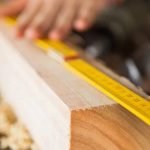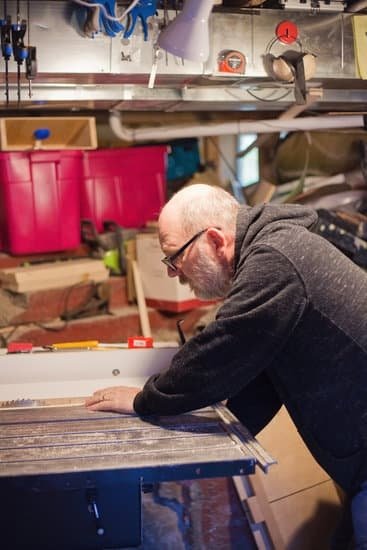Are you interested in woodworking and wondering how to dry wood stumps for your projects? Properly dried wood is essential for any woodworking project, as it ensures the durability and stability of the finished product. In this article, we will explore the importance of properly dried wood for woodworking, the different methods of wood drying, and how to choose the right wood stumps for your projects.
When it comes to woodworking, using improperly dried wood can lead to a variety of issues such as warping, cracking, and mold growth. Understanding the different methods of wood drying is crucial in ensuring that your wood stumps are adequately dried before using them in your projects. Whether you choose air drying or kiln drying, each method has its pros and cons that need to be considered.
Choosing the right wood stumps for your woodworking projects is also an important consideration. Not all types of wood are suitable for every project, so selecting the right type of wood stump based on its species, size, and condition is crucial. Additionally, preparing the wood stumps for drying is a necessary step to ensure that the process is effective and efficient.
Understanding the Different Methods of Wood Drying
Wood drying is an essential part of woodworking, as it ensures that the wood stumps used for projects are sturdy and long-lasting. There are several methods of wood drying that can be employed, each with its own advantages and disadvantages. One common and traditional method is air drying, while another more modern approach is kiln drying.
Air drying involves stacking the wood in a way that allows adequate air circulation, typically in a covered but well-ventilated area. This method is cost-effective and environmentally friendly, as it doesn’t require special equipment or energy consumption. However, it can be a slow process, taking anywhere from several months to a few years depending on the type and thickness of the wood.
On the other hand, kiln drying is a more accelerated process that involves using specialized equipment to control temperature, humidity, and airflow to dry the wood stumps quickly and efficiently. This method is often used for commercial purposes due to its speed and ability to remove moisture more thoroughly. However, it also requires an investment in equipment and energy costs.
Ultimately, understanding the different methods of wood drying allows woodworkers to choose the most suitable approach based on their specific needs and resources. Factors such as time constraints, budget, and available space will all play a role in determining which method works best for drying wood stumps for woodworking projects.
| Method | Pros | Cons |
|---|---|---|
| Air Drying | Cost-effective, environmentally friendly | Slow process |
| Kiln Drying | Quick and efficient | Requires investment in equipment and energy costs |
Choosing the Right Wood Stumps for Woodworking Projects
When it comes to woodworking projects, choosing the right wood stumps is crucial for the success of your endeavor. Different types of wood have different characteristics, including density, grain pattern, and natural oils. These factors play a significant role in determining how the wood will hold up for specific woodworking projects.
One of the first considerations when choosing wood stumps for woodworking projects is the type of wood itself. Hardwoods like oak, maple, and cherry are known for their strength and durability, making them ideal for furniture and cabinetry. Softwoods like pine and cedar are popular choices for outdoor projects due to their resistance to moisture and insects.
Another important aspect to consider when selecting wood stumps is the size and shape. Depending on your project, you may need larger or smaller pieces of wood with specific dimensions and shapes. Additionally, you’ll want to inspect the wood stumps for any signs of damage or decay before you begin the drying process.
Once you have chosen the right wood stumps for your woodworking project, it’s time to think about how to properly dry them. Whether you choose air drying or kiln drying, it’s essential to follow the correct steps to ensure that your wood stumps are dried effectively and ready for use in your woodworking projects.
| Wood Type | Ideal Use |
|---|---|
| Hardwoods (Oak, Maple, Cherry) | Furniture and Cabinetry |
| Softwoods (Pine, Cedar) | Outdoor Projects |
Preparing the Wood Stumps for Drying
Wood selection is crucial when it comes to properly drying wood stumps for woodworking projects. The process of selecting the right wood stumps begins with identifying the type of tree the stumps are from. Hardwood trees such as oak, maple, and cherry are excellent choices for woodworking due to their dense and durable nature. Softwood trees like pine and cedar are also used in woodworking but require a different drying process compared to hardwood.
Before beginning the drying process, it’s important to ensure that the wood stumps are free from any excess dirt, bark, or debris. This can be done by using a wire brush or scraper to remove any surface contaminants. Additionally, sealing the ends of the wood stumps with a commercial wax-based end sealer or latex paint can help prevent excessive moisture loss during the drying process.
Debarking and Surface Preparation
After removing any surface contaminants from the wood stumps, the next step is to debark them. Removing the bark from the stumps helps facilitate an even drying process, as bark can trap moisture and slow down the drying time. A drawknife or chisel can be used to effectively remove the bark from the wood stumps.
Cutting and Sealing
The size of the wood stumps should also be considered before proceeding with the drying process. Cutting large stumps into manageable sizes will not only speed up the drying time but also make them easier to handle during subsequent woodworking tasks. Additionally, sealing freshly cut surfaces with wax-based end sealers will help prevent rapid moisture loss and minimize cracking and warping while drying.
By following these preparatory steps, woodworkers can ensure that their chosen wood stumps are ready for efficient and effective drying using either air-drying or kiln-drying methods for their woodworking projects.
Air Drying Wood Stumps
When it comes to woodworking, properly dried wood is crucial for the success of any project. One popular method for drying wood stumps is air drying. This technique allows the natural elements to slowly remove moisture from the wood, resulting in a more stable and workable material. Here is a step-by-step guide on how to air dry wood stumps for woodworking:
1. Select the Right Location: Choose an open area with good airflow and preferably where the wood can be exposed to sunlight. This will help moisture evaporate more quickly.
2. Prepare the Wood Stumps: Before air drying, it’s important to prepare the wood stumps by cutting them into manageable sizes and sealing the ends with a commercial sealer or wax to prevent cracks from forming.
3. Stack the Wood Stumps: Carefully stack the wood stumps on top of each other, leaving space between each piece for air circulation. It’s essential to ensure that the stack is stable and won’t collapse.
4. Monitor Progress: Check the moisture content of the wood regularly using a moisture meter. The goal is to reach a moisture content of around 10-15% before using the wood in woodworking projects.
Air drying wood stumps for woodworking can take several months or even years, depending on factors such as humidity levels, temperature, and the type of wood being dried. However, this method is cost-effective and requires minimal equipment, making it a popular choice among woodworking enthusiasts looking to use sustainable methods for their projects.
Kiln Drying Wood Stumps
Kiln drying is a popular method for drying wood stumps, especially for those in the woodworking industry. This process involves placing the wood in a kiln or oven where temperature, humidity, and air circulation are tightly controlled. One of the main advantages of kiln drying is the speed at which it can be completed.
Unlike air drying, which can take several months to years, depending on the wood species and size, kiln drying can reduce the moisture content in a matter of weeks. This makes it an efficient option for those who need dried wood stumps quickly for their woodworking projects.
Another advantage of kiln drying wood stumps is that it helps to eliminate pests and fungi that may be present in the wood. The high temperatures used in kilns effectively kill off any insects or larvae that may be residing in the wood, as well as any mold or fungi spores. This not only ensures that the dried wood stumps are safe to use for woodworking but also helps prevent any infestations or decay in the future.
Despite its efficiency and benefits, kiln drying also has some drawbacks. One of the main cons of this method is the cost associated with owning and operating a kiln. For small-scale woodworkers or hobbyists, investing in a kiln may not be feasible, making this method less accessible compared to air drying.
Additionally, some argue that kiln-dried wood stumps may not have the same character and natural beauty as those dried using traditional methods. The rapid drying process can result in greater stress within the wood fibers, potentially affecting its appearance and stability.
Overall, while kiln drying offers speed and convenience, individuals should consider their specific needs and preferences when choosing a method for drying wood stumps for woodworking projects. Understanding both the pros and cons will help ensure that they select the right method for their unique situation.
Monitoring the Moisture Content of Wood Stumps
One of the most critical aspects of properly drying wood stumps for woodworking is monitoring the moisture content throughout the process. The moisture content of wood affects its workability, stability, and overall quality in woodworking projects. To ensure that your wood stumps are adequately dried and ready for use, it’s essential to keep a close eye on their moisture levels at each stage of the drying process.
There are various methods for measuring the moisture content of wood, including using a moisture meter or simply weighing the wood at regular intervals. A moisture meter is a valuable tool for monitoring the moisture content of wood stumps accurately. By inserting the pins or probes into the wood, you can obtain instant readings of its moisture levels, allowing you to make informed decisions about when the wood is ready for use in woodworking projects.
In addition to using a moisture meter, regularly weighing your wood stumps can also provide valuable insights into their drying progress. By recording and comparing weight measurements over time, you can track changes in the wood’s moisture content and determine when it has reached an ideal level for woodworking. Regardless of the method you choose, consistent monitoring of the moisture content is crucial to achieving properly dried wood stumps for your woodworking endeavors.
Tips for Storing and Maintaining Dried Wood Stumps
Proper Storage of Dried Wood Stumps
After going through the process of drying wood stumps for woodworking, it is essential to store them properly to maintain their quality. The key to storing dried wood stumps is to keep them in a well-ventilated, dry area, away from direct sunlight and moisture. Storing the wood in a temperature-controlled environment will also help prevent any fluctuations in moisture content that could affect the stability of the wood.
Protecting Dried Wood Stumps
To ensure that your dried wood stumps remain in good condition, it’s important to protect them from potential damage. This includes avoiding contact with water or other liquids, as well as protecting the wood from pests and fungi. Applying a coat of wood sealant can provide an extra layer of protection and help maintain the quality of the wood over time.
Maintaining Moisture Content
Even after the wood stumps have been dried, it’s crucial to monitor their moisture content regularly. Investing in a moisture meter can help you keep track of any changes in the moisture levels of the wood, allowing you to take necessary measures to maintain its stability. Regularly checking for signs of mold or decay is also essential for maintaining the quality of dried wood stumps.
Using Dried Wood Stumps in Woodworking Projects
Using properly dried wood stumps in woodworking projects is crucial for ensuring the durability and quality of the finished product. Whether you are a beginner or experienced woodworker, understanding how to dry wood stumps for woodworking is essential for achieving the best results.
After going through the different methods of wood drying and selecting the right wood stumps for your project, it’s important to have a clear vision of how you will use the dried wood stumps in your woodworking endeavors.
One great idea for using dried wood stumps in woodworking projects is to create unique and rustic furniture pieces. The natural shapes and grains of dried wood stumps can be used to make one-of-a-kind coffee tables, side tables, or stools that will add a touch of organic beauty to any space.
Additionally, dried wood stumps can also be used to craft decorative accents such as candle holders, centerpieces, and wall art, adding a warm and earthy feel to your home decor.
In conclusion, learning how to dry wood stumps for woodworking opens up endless possibilities for creating stunning and functional pieces. By understanding the importance of properly dried wood, mastering the different drying methods, and exploring creative ideas for using dried wood stumps in projects, you can elevate your woodworking skills and produce exceptional pieces that showcase the natural beauty of wood.
So go ahead, select your favorite method for drying wood stumps and let your creativity soar as you incorporate them into your next woodworking masterpiece.
Frequently Asked Questions
How Do You Dry Out a Wooden Stump?
One way to dry out a wooden stump is by using a chain saw to cut it into smaller pieces, which will speed up the drying process. Then, the wood can be left in a well-ventilated area for several months to allow the moisture to evaporate.
Another method is to use a kiln or an oven to remove the moisture from the wood more quickly, but this requires careful monitoring to prevent the wood from drying too quickly and cracking.
What Is the Best Way to Dry Wood for Woodworking?
The best way to dry wood for woodworking is through a process called air-drying, which involves stacking the wood with spacers between each board to allow for proper air circulation. It’s important to store the wood in a location with good air flow and protection from direct sunlight and rain.
This slow drying process helps reduce the risk of warping, cracking, or other defects that can occur when wood dries too quickly.
How Do You Know if Wood Is Dry Enough for Woodworking?
There are several ways to test if wood is dry enough for woodworking. One method is by using a moisture meter, which measures the moisture content within the wood.
Another way is by inspecting the ends of the boards for cracks or splits, as well as checking if they feel noticeably lighter in weight compared to when they were freshly cut. Additionally, experienced woodworkers may also rely on visual indicators such as changes in color and sound when tapping on the wood with a tool.

Hi everyone! I’m a woodworker and blogger, and this is my woodworking blog. In my blog, I share tips and tricks for woodworkers of all skill levels, as well as project ideas that you can try yourself.





